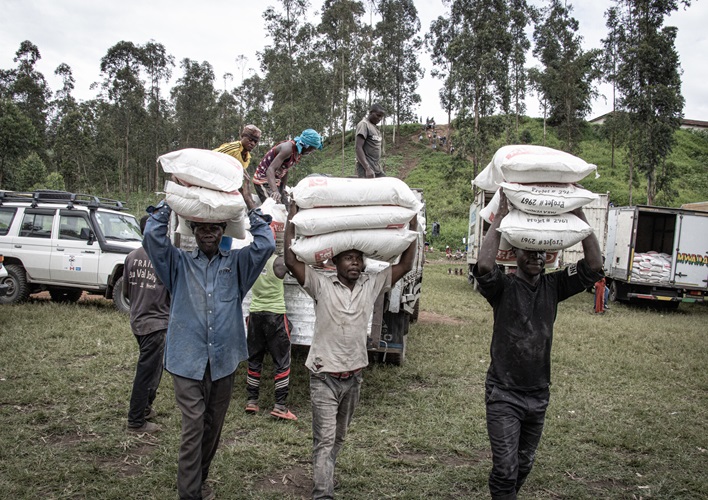The village of Shasha, a little to the west of Goma in DR Congo, illustrates well the integration of humanitarian, development and peace work. The rich volcanic soils in this area are densely settled by small-scale farmers. But in recent years, they have been joined by thousands of newcomers; internally displaced people (IDPs) fleeing conflict in their own villages.
The arrival of IDPs creates the potential for more conflict as they seek out plots of land to live on and support their families. In response, local NGOs are implementing triple nexus projects. Triple nexus projects are projects that have three points of focus: to meet humanitarian needs (short term food assistance), development needs (land to grow food), and prevent conflict between IDPs and host communities (peace).
This is one of the projects I visited in January 2023, as part of a trip meeting partners of Mennonite Central Committee in Rwanda, Zimbabwe and DR Congo to learn more about triple nexus programming. The partner organizations we met have a long history in their communities, and their work has shifted over time to respond to changing needs – sometimes conflict reduction, sometimes humanitarian aid, sometimes development projects, with these often coordinated in some way.
In all three countries, reducing interpersonal conflict is a priority for partners. For example, a Zimbabwe partner providing a water source for a community garden recognized that water access is a potential source of conflict, so they provided a second water source for the wider community who were not members of the garden group. While there are tools to measure the impact of these “little P peace” activities at a community level, it’s not clear to what degree they contribute toward what we call “big P peace” – the integration of peace at a societal level.
In DR Congo where the conflict is highly visible and ever-shifting, a Congolese partner we met works in “big P peace” by encouraging members of armed groups to disarm, while also helping those who disarm to find livelihood activities and communities who will accept them. This is peace and development, working hand in hand.
Even in cases where peacebuilding doesn’t include a humanitarian or development component, peacebuilding efforts are often an inexpensive way of adding significant value to food security projects, by reducing the risk of conflict that could undermine project gains.
In Zimbabwe, we met a partner training police officers in non-violent methods to shift their activities from protecting the state to protecting civilians. And while Rwanda’s big conflict is in the past, the 1994 genocide casts a long shadow over the present. Peacebuilding efforts to prevent future atrocities are vital to healing the wounds that remain.
These local partners may be working in three very different contexts, but there was one belief many partners and program participants shared: “There is no development without peace.”
This story was written by Paul Hagerman, director of public policy, and originally published in the 2023 Summer edition of Breaking Bread. Download or order your copy here.




